The event with the second highest societal impact after the Moscow windstorm, occurred on 17 September in a swath from Bosnia and Herzegovina to Ukraine. It was also the last severe convective windstorm case of 2017. The date is actually well after the climatological peak of severe storm activity in the area, which is in June and July.
The event started with a cluster of thunderstorms impacting Split, Croatia, in the morning hours. This activity produced very large hail up to 5 cm in diameter that resulted in damage to cars. The first severe wind gusts were reported from Bosnia and Herzegovina and the convective system reached its peak intensity as it raced across northern Serbia and southern Ukraine between 11 and 16 UTC (Fig. 1), with measured wind gusts reaching up to 35 m/s. Widespread damage was reported, roofs were torn off of buildings, powerlines snapped and trees uprooted. The last severe wind gust reports were received from around 17 UTC over Ukraine. Overall, the system killed 10 and injured 94 along its track. Some of the damage suggests that much stronger wind speeds, than the measured maximum of 35 m/s, must have been involved.
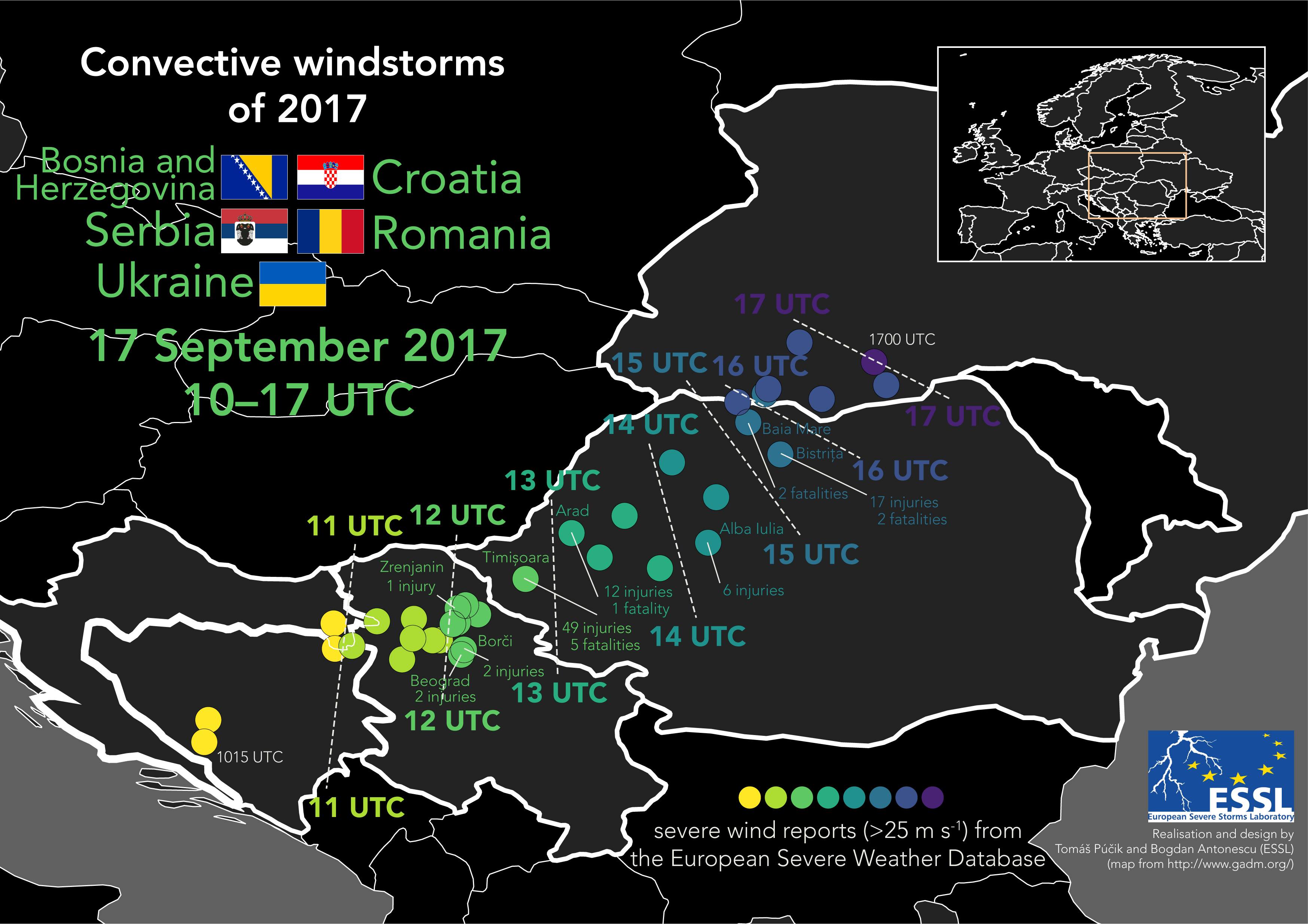
Fig. 1 Chronological progression of severe wind reports in a convective windstorm of 17 September 2017 across southeastern Europe.
Radar observations of the storm show that the system, while not very large, involved very high radar reflectivities of over 60 dBz (Fig. 2). Over northwestern Romania, it attained a classic “bow-echo” shape, which is typically associated with damaging wind gusts (Fig. 3). The system moved extremely fast between Serbia and Romania, covering a distance of 400 km in a mere 3 hours.
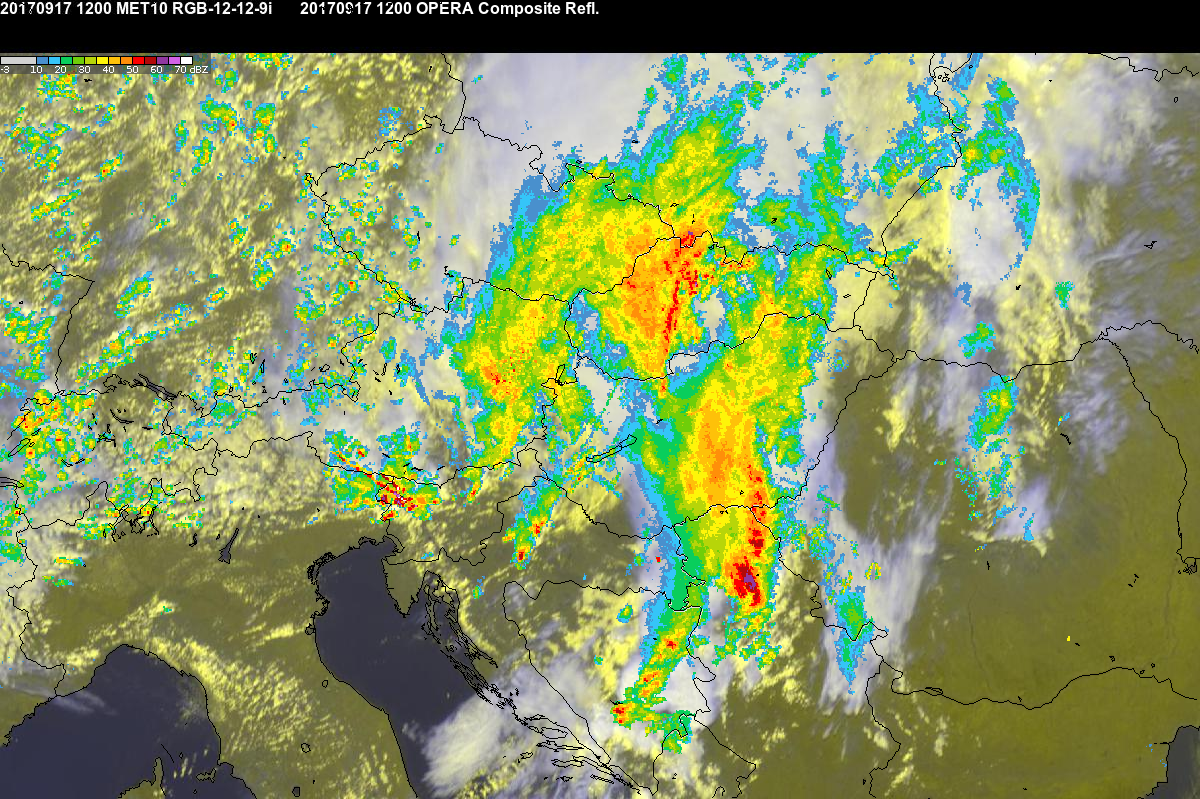
Fig. 2 12:00 UTC satellite (combination of visible and infrared channels and radar (OPERA composite) imagery. OPERA radar data © EUMETNET, satellite data © EUMETSAT.
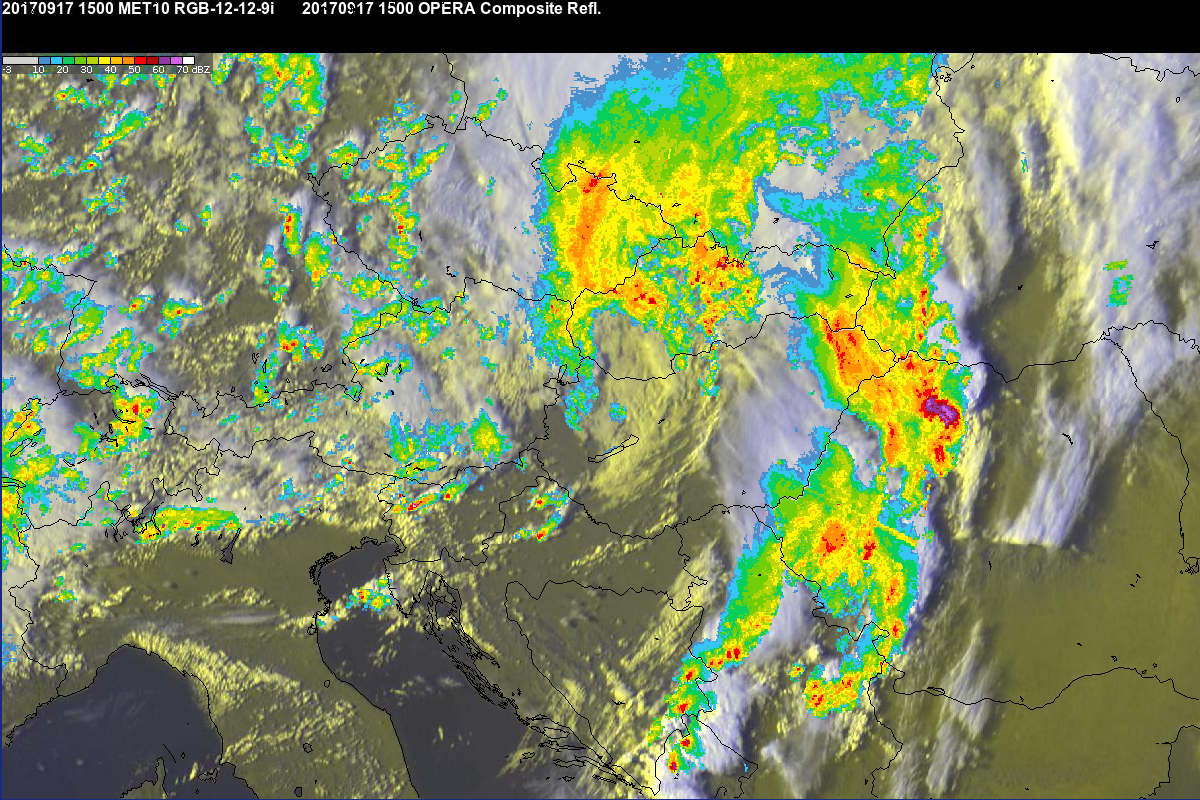
Fig. 3 15:00 UTC satellite (combination of visible and infrared channels) and radar (OPERA composite) imagery. OPERA radar data © EUMETNET, satellite data © EUMETSAT.
The fast movement speed could be attributed to the combination of strong background flow in the atmosphere and a strong cold pool of the system, as the temperature dropped by over 10°C at some locations in the path of the storm. The convective system formed ahead of the deep trough with strong southwesterly flow exceeding 30 m/s and 20 m/s at 500 and 700 hPa respectively. (Fig. 4) Combined with southerly to southeasterly flow at the surface of around 5 m/s, very strong vertical wind shear was present, conducive to well-organised convection. The 12 UTC sounding taken from Beograd just south of the storm system reveals very dry air in the lower troposphere and confirms the presence of pronounced vertical wind shear. In this perspective, the situation actually resembles the Moscow case of 29 May 2017. While the original sounding does not show any CAPE, its modification with observed dewpoints above 10°C ahead of the storm shows that enough CAPE was present for development of deep convective updrafts with high cloud bases (Fig. 5).
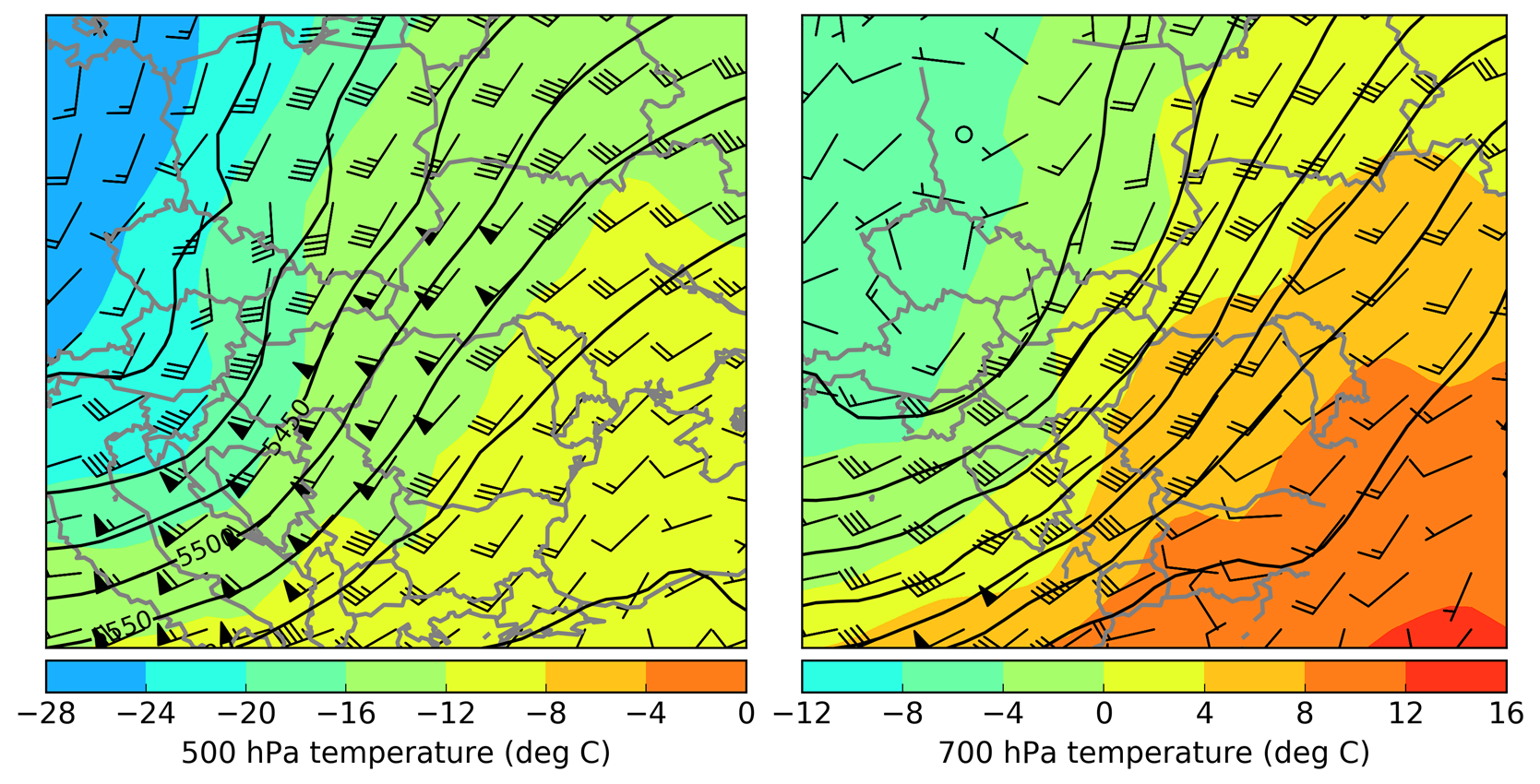
Fig. 4 17 September 2017 12 UTC (Left) 500 hPa geopotential height (black contours), temperature (colour scale) and wind barbs, (Right) The same as left, but for 700 hPa. Data based on ERA-Interim reanalysis.
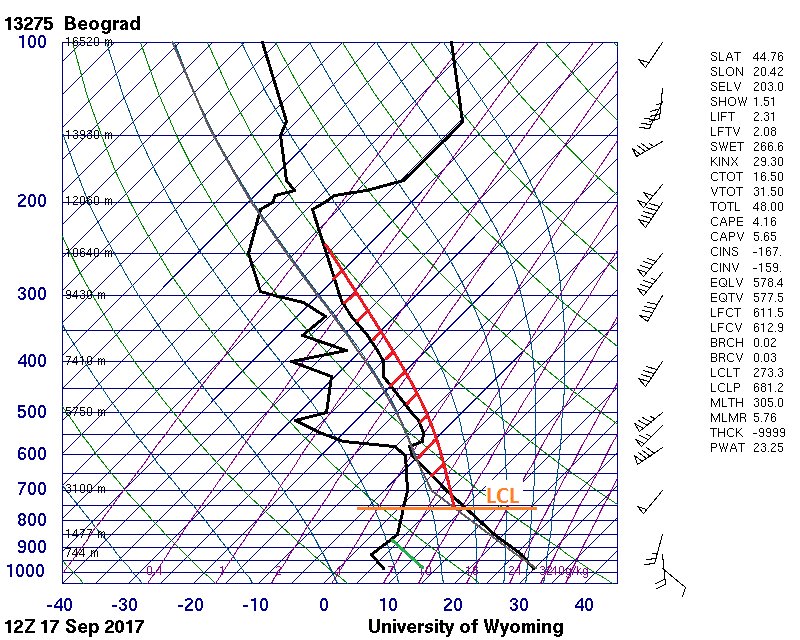
Fig. 5 Modified Beograd 12 UTC sounding. Green line represents modified dew point curve, orange line represents the Lifted Condensation Level (LCL) and red hatching CAPE for modified surface parcel. Courtesy of University of Wyoming.
The presence of rather dry conditions at the surface led to the development of a dust storm along the gust front of the storm. Besides the spectacular appearance (Fig. 6), however, dust storm created very dangerous driving conditions with practically zero visibility, as evidenced by numerous videos submitted by surprised drivers.

Fig. 6 Photographs depicting dust lofted ahead of the progressing storm near Inđija, Serbia. Courtesy of Dejan Primorac.
ESSL would like to thank Severe Weather Serbia for the wealth of information they provided about this event, as well as Dejan Primorac for his agreement to share the photos of the dust storm.
